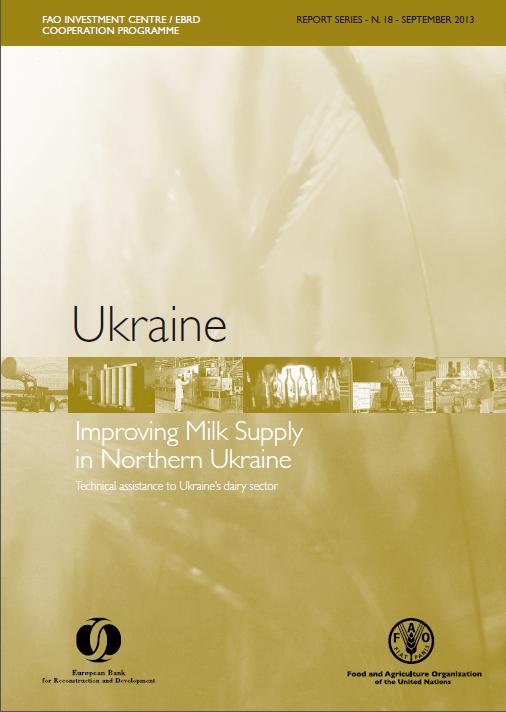New report analyzes milk production trends in Northern Ukraine

Despite over two decades of production decline, Ukraine still remains a net exporter of milk and dairy products, though the balance has been shifting toward imports in recent years. Historically, rural households have been the primary milk producers and still contribute 80 percent of national production, but numbers indicate that this reality is changing. In 2000, the number of cows in rural households began decreasing and, in 2009, commercial milk production grew for the first time since in over a decade as rural household production declined.
The European Bank for Reconstruction and Development (EBRD) called upon the FAO Investment Centre to conduct an analysis to identify constraints and opportunities in the sector, run a rural household dairy farmer training, and initiate policy discussions. The results of this analysis and the training can be found in the new publication “Improving Milk Supply in Northern Ukraine: Technical assistance to Ukraine’s dairy sector”.
The report is structured in three chapters. The first reviews the overall sector in Ukraine and explains clearly why rural household production is struggling to compete. The second chapter presents commercial and household dairy farm investment models, exploring whether the latter can modernize their technology and still be profitable. The third gives an overview of the dairy farm training activities that took place in the Sumy Oblast of Ukraine.
Based on the authors’ analysis of sector trends, the publication explains that milk processors have been increasingly turning to commercial dairy farms for supply because the quality is better and more consistent than that of rural household farms. The current impacts of this are clear: commercial milk farm production accounted for 53 percent of milk processed in 2010 as compared with 37 percent in 2006. The report explores the roots of rural household milk quality and supply problems, which include poor credit access and animal nutrition knowledge, and suggests solutions such as stronger state support policies, regulation of antibiotics use in household farms, and the introduction of price premiums by processors to reward rural household farms that produce higher quality milk.
For the full report, please click here.
For more information on the project, please click here.
